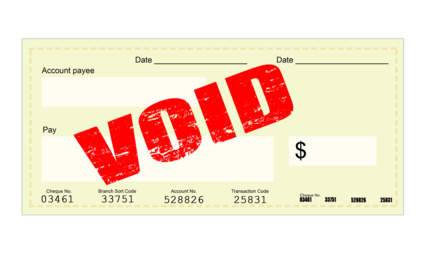Trial Balances And How They Work - The Beginner’s Guide
Trial balances are a type of booking-keeping method. They contain all the ledgers of a business and split them into credit balances and debit balances.
A trial balance is normally created at the end of a reporting period to ensure that the company’s bookkeeping has been completed correctly. It’s essentially a checking method.
Also read: How to Provide Proof of Income

How Do Trial Balances Work?
Trial balances are designed to ensure the mathematical aspects of the bookkeeping are correct before more complex details are analyzed. This is why it’s the first step in the auditing process.
The main reason for the trial balance is to detect any duplicate entries. At the end of the process, if the total credits match the total debits, then the worksheet is considered balanced. This means that no math-based errors have been found in the ledgers.
To create a trial balance sheet simply open a spreadsheet and add your debits or payments into one column and your credits or income in another. Add the numbers in the columns together and then compare the debit figure to the credit figure. They should be the same, showing that all financial transactions have been accounted for.
If errors have occurred outside of the ledger, the trial balance will not pick it up. It only ensures that the ledgers match.
Also read: Wage Vs Salary
Types Of Trial Balances
There are three main types of trial balances; unadjusted, adjusted, and post-closing.
They are all completed in the same way, but they all have slightly different purposes. Unadjusted trial balances are created at the beginning of the audit process. They look at the data without any changes to see the current or “true” outcome.
Adjusted trial balances are secondary checks when errors have been found in the unadjusted trials. Once the adjustments have been made, this process happens again, while also recording that adjustments were needed.
At this point, the final balances can be announced in financial statements.
The post-closing balance shows the end-of-year balance once all entries have been closed. It is used to encompass the entire year's financial balances and creates the starting balance for the next financial year.
Also read: Proof of Income for a Mortgage

The Difference Between A Balance SheetAnd A Trial Balance
The main difference between a balance sheet and a trial balance is the amount of data it covers.
Balance sheets include more than the ledger closing balances of a company. It also includes the equity of the business, the assets it holds, and the liabilities it manages.
The balance sheet is the data that is presented to the public, while the trial balance is the internal data used within the accounting department.
Because the balance sheet needs to be presented to the public, it has to be signed by an auditor as a sign of authority. This makes balance sheets more formal than trial balances.
Because trial balances are less formal and don’t need to be presented to anyone, they can be completed as often as a company needs them. In fact, many companies use trial balances to gauge their current financial situation before the balance sheet is due.
Also read: How to Save Money For a Car
In What Order Should You Organize Your Trial Balance
As we said before, your spreadsheet could contain two columns, one for debit figures and the other for credit figures.
Your debt figures should include any money leaving the company, such as rent, savings, and expenses. Your credit figures should include money entering the company such as sales, capital, and interest income.
Managing your trial balance will look differently depending on the company itself and the personal preference of the workers, however, to help you get started, you can use our suggestions below.
Adding a third column at the beginning of your spreadsheet, this column should contain the names of the incoming and outgoing.
The first collection of details should contain accounts that have accumulated over the years. This could mean savings accounts, credit card debts, fixed assets, and company capital.
The second collection of details should be permanent and unchanging figures. This could include rent, web hosting, software, cleaning fees, advertising, and so on.
The last collection of details should contain the remaining figures which change periodically. For example, wages, sales, interest income, fuel, and expenses.
If you have one-time payments or other very temporary changes in financial circumstances, add these at the very bottom of the trial balance. Each section you create should be easy to define and visualize. This will make understanding your data, year on year, easier.
Also read: What is the 50 30 20 Rule?
What Adjustments Do Accountants Make?
The term “adjustments” aren’t normally found on digital software for trial balances anymore. They are normally only used on manual bookkeeping records. There is no reason for this change other than simpler filing names.
Accountants first add in all of the data from the ledgers and then confirm if the numbers match. If they do, then no adjustments are needed. If they don’t then the accounts will first look for any typos or misread information.
If they are using manual bookkeeping methods, they may have misread the data, but if they are using digital software then a typo could have been made.
Once all of the data has been checked, the adjusted trial balance can be created. If the figures still do not match, then further investigations may be needed.
It could be that changes to the company are needed to stop the business from going into debt, or it could be that the savings account receives more funding than expected.

Summary
The point of a trial balance is to make sure that your accounting figures are accurate throughout the year so that when the balance sheet is created it is done so accurately.
The trial balance can help the accounting department keep on top of the financial changes of the business well making sure errors and misread data is updated and changed often.
If the sheet isn’t balanced by the end of the process, an adjustment may be needed to ensure the data is correct.
Your check stubs can be a great way for you to keep track of your finances so you can easily add the figures to your spreadsheet.















